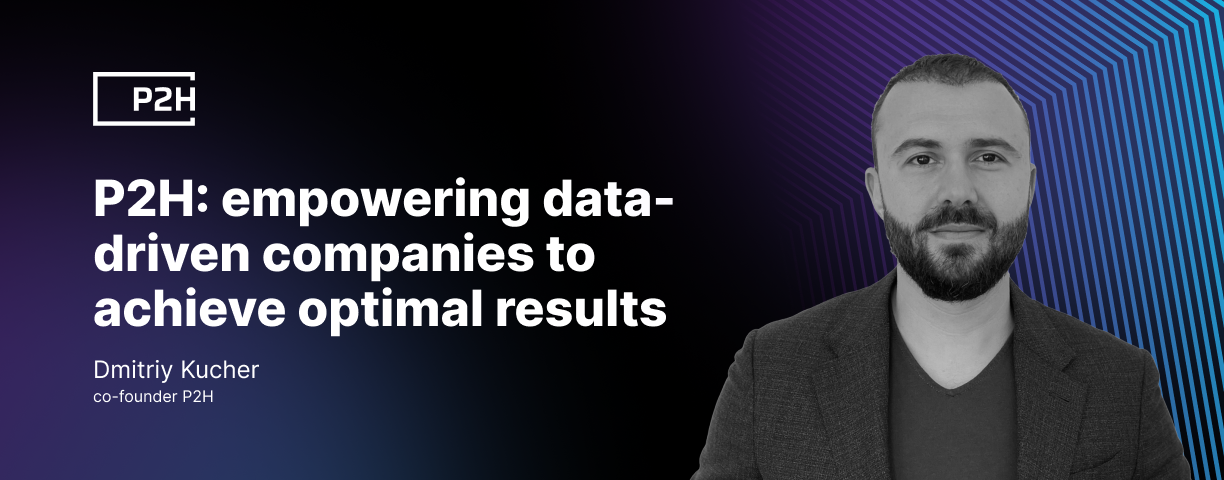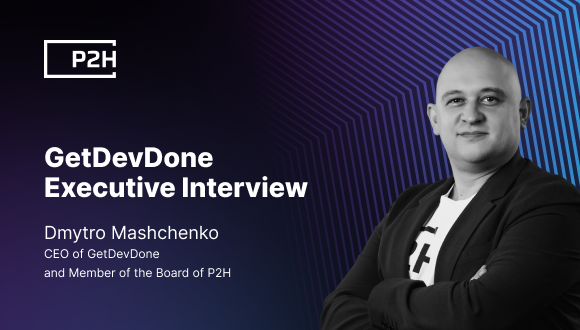
In the dynamic landscape of global commerce, rapid and precise decision-making is essential for maintaining a competitive edge. Access to real-time data insights has become an essential asset for companies looking to spot trends, capture opportunities, and maintain their edge. However, a significant challenge exists: only 23% of data insights are produced in real time from the vast amount of data collected by organizations today, as revealed by a recent report from TechTarget’s Enterprise Strategy Group.
Traditionally, businesses have relied on established methods to analyze data. However, this conventional approach can be limiting, often leading to missed opportunities and an incomplete understanding of complex datasets. P2H, a pioneering IT company co-founded by Dmitriy Kucher, is redefining the data-driven landscape by championing a more unbiased approach—one that capitalizes on unexpected findings and can unearth insights that were initially off the radar.
In this article, we will explore how P2H is changing the game by helping companies harness the power of data and achieve optimal results.
Data Collection and Aggregation: Setting the Stage for Optimization
Quality data from diverse sources is the cornerstone of data-driven decision-making. To achieve real-time data insights, organizations must first focus on data collection and aggregation. This involves gathering data from various sources, cleaning and structuring it, and then integrating it into a unified system.
However, in the European market, for example, outdated systems pose unique challenges that can be barriers to data collection and aggregation. Similarly, in the United States in the realm of government technology (GovTech), the complexity of legacy systems also poses a unique challenge. Unlike hardware, which has a finite lifespan and can be replaced, many GovTech systems in the United States were built in archaic languages long before the Microsoft era.
“The systems were developed decades ago, and we now find ourselves patching up ‘legacy code,’” Kucher explains. “At some point, it might become more cost-effective to overhaul these systems, possibly rethinking not just the technical side but also the paradigm.”
However, when confronted with the need to overhaul these outdated systems, there’s a hesitancy to shoulder the responsibility and funding necessary. Bureaucrats tend to view requests for system updates as minor, while integrators recognize the potential for severe consequences. Consequently, Europe’s GovTech landscape, while not entirely free of antiquated elements, seems more streamlined. But whether in Europe or the United States, GovTech is inherently political, shaped by the interplay of bureaucracy and regulation.
In contrast, African markets exhibit their own idiosyncrasies, with countries like Ghana leading in digitalization despite significant literacy challenges. Adapting interfaces to accommodate these unique circumstances is crucial. For the Middle East and North Africa (MENA) region, the challenge lies in balancing engineering solutions with deeply rooted Microsoft-based systems. P2H recognizes the importance of finding innovative ways to address these diverse challenges.
Breaking Free from Tradition: The Complications of the Old Way
The importance of data-driven decision-making is underscored by global trends. Across industries and regions, companies are recognizing the need to harness the power of data. For instance, Statista forecasts that data analytics spending in the United States will hit $138.9 billion by 2024. This investment reflects the growing reliance on data to drive business outcomes. Despite this, several barriers exist that hinder the effective application of data-driven decision-making.
Management should always be data-driven to ensure that decisions are not made “on a whim” or based on intuition. Data-driven business management is a growing trend that changes the way decisions are made and work is conducted within an organization. By collecting and analyzing large volumes of information, managers can gain a better understanding of how the business operates, identify patterns, trends, and insights to ultimately use them for decision-making and improving business results. Uncertainty hinders the ability to see whether a particular hypothesis is working or if it’s worth investing further.
Traditionally, organizations have approached data analytics with a preconceived notion of what they seek to find, often resulting in a confirmation bias. This conventional approach can lead to missed opportunities and a limited scope of insights. The emphasis is on looking for answers to questions that are already known, rather than allowing the data to reveal unexpected patterns and insights.
P2H champions a distinct approach to data analysis, one that prioritizes objectivity and allows data to reveal its hidden insights. For instance, consider a retail company analyzing customer purchase data. Instead of assuming that customers always prefer discounts and promotions, P2H recommends exploring the data with an open mind. By doing so, the company may discover that a particular segment of customers consistently buys premium products at regular prices. This unexpected insight could lead to tailored marketing strategies targeting this high-value segment, ultimately increasing profitability.
Kucher, P2H’s Chief Business Development Officer, emphasizes the importance of this shift in mindset. “I definitely think the system needs an overhaul, but it’s important to time that change right. If an established company wants to transition into being data-driven, it doesn’t have to start by upending its entire infrastructure. The aim of effective business intelligence is to seamlessly integrate a monitoring system within the existing operations—essentially to graft it onto the ‘living organism’ without disrupting it. Our objective is to gather precise data using the tools we already have, make sense of that data, and then make informed decisions. Once we’ve got that down, we can consider altering the system.”
In established businesses, the decision to introduce radical changes solely for the purpose of data collection is often met with hesitation due to the associated risks and unpredictable outcomes. Instead, a more prudent approach is to focus on proper data observation, which involves systematically gathering data for existing processes, even if it requires significant effort and manual work. This method can prove to be more effective in the long run compared to entirely overhauling functional systems and introducing new tools. Once data collection processes are in place, the priority should shift towards creating accessible and user-friendly dashboards that allow all team members to assess real-time performance, track achievements, and identify areas for improvement within the organization.
Overcoming Pitfalls and Embracing Collaboration
Data-driven decision-making holds significant potential, yet it comes with its share of pitfalls. One prevalent challenge is the inclination to excessively rely on recognizable patterns without a deep contextual understanding. For instance, a retailer might notice a pattern of increased sales during holiday seasons and decide to stock up on seasonal items. However, without a deeper understanding of the local market dynamics, they might overlook opportunities to cater to unique customer preferences. This can lead to erroneous conclusions and missed opportunities, such as underestimating the demand for specific niche products.
Dmitriy Kucher emphasizes that overcoming these challenges requires a blend of domain knowledge and collaboration.
“We encourage our clients to work closely with their teams and leverage their domain expertise,” Kucher says. “This collaborative approach ensures that data insights are not only accurate but also actionable.”
Kucher believes analytics should align with existing processes rather than forcing process changes. Sometimes, it’s more effective to perform additional calculations or extensions instead of extensive alterations to initial data collection and calculation processes. He also says system redesign should occur when necessary, especially for established companies aiming to become data-driven. Rather than immediately changing the entire infrastructure, the focus should be on building a monitoring system within the existing organization, collecting accurate data, and mastering the use of existing tools for data collection and decision-making before considering any system changes.
Future Trends in Data-Driven Services and Emerging Markets
P2H’s strategies for achieving real-time data insights involve a combination of cutting-edge technology and expertise. By leveraging advanced data management tools and architecture, P2H empowers organizations to overcome the challenges associated with managing data in motion. This ensures that data insights are not only accurate but also timely, enabling companies to respond swiftly to changing market dynamics
Looking ahead, it’s clear that adapting to the ever-evolving data and technological landscapes will be imperative for companies. Whether it’s navigating legacy data systems or designing data-driven interfaces for diverse markets, success in the digital age hinges on foresight and adaptability.
Companies that stay ahead of the curve, leveraging both global data trends and local nuances, will not only survive but thrive in the competitive market. As the future unfolds, those who leverage data insights and technological advancements will not only survive but also lead in the competitive market.


